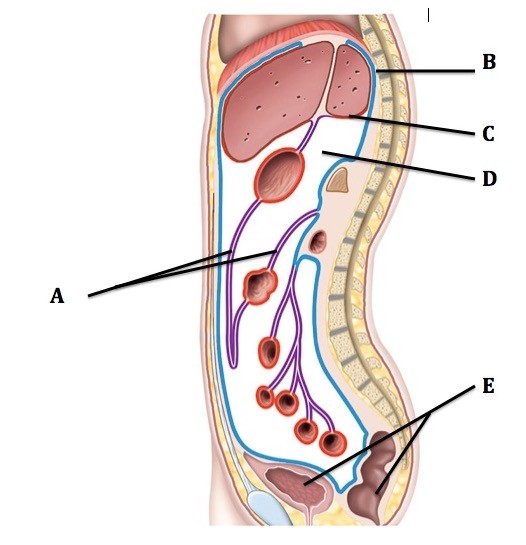Rabies is caused by a virus that attacks the central nervous system. The virus is normally introduced by an animal bite that breaks the surface of the skin. Since the virus is not motile, how does it travel to the central nervous system?
What will be an ideal response?
When the animal bite punctures the skin, some nerve receptors are physically damaged. The virus gains entrance to the neuron through these damaged axons. Retrograde axonal transport moves the virus toward the cell body and toward the central nervous system, where it can reproduce and spread.
You might also like to view...
Carbonic anhydrase is located where?
A) principal cells basolateral membrane B) intercalated cells basolateral membrane C) proximal tubule apical membrane D) proximal tubule basolateral membrane E) principal cells apical membrane
 This is a sagittal section through the abdominopelvic cavity. What cavity does "D" represent?
This is a sagittal section through the abdominopelvic cavity. What cavity does "D" represent?
A. Parietal peritoneum (lines cavity) B. Mesentery C. Peritoneal cavity D. Visceral peritoneum (covers organs) E. Retroperitoneal organs
Human cells that lack centrioles cannot:
A) move. B) metabolize sugars. C) synthesize proteins. D) divide.
A place where two or more bones come together is a(n)
A. cavity. B. joint. C. contusion. D. articulation. E. joint and an articulation.